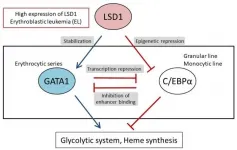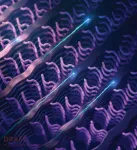New advice on arthritis drugs
Study checks rheumatoid arthritis heart-stroke risk
2021-07-06
(Press-News.org) New research evaluating the drugs commonly used by rheumatoid arthritis patients suggests two combinations could reduce the risk of heart attack and strokes.
The new publication in Frontiers in Cardiovascular Medicine has found that anti-rheumatic drug regimens that include either tumour necrosis factor inhibitors or hydroxychloroquine might significantly protect the endothelium in rheumatoid arthritis.
Occurring in about one in 100 people, rheumatoid arthritis (RA) is a common autoimmune disease which leads to inflammation and pain in the connective tissue of a patient's joints.
"Rheumatoid arthritis patients have an increased risk of atherosclerosis (clogged arteries) and cardiovascular disease when compared to the general population, probably due to an excess of inflammation in patients with this condition," says chief investigator Professor Gian Luca Erre, national coordinator of the Evaluation for Coronary Heart Disease Risk Estimation in Rheumatoid Arthritis (EDRA) study.
The Italian and Australian research evaluated five different types of anti-rheumatic drug usage groups in a group of 868 rheumatoid arthritis patients in a national Italian study.
"This excess of inflammation is not limited to the joints, but also involves the blood vessels leading to dysfunction in the inner layer of blood vessels (the endothelial)," says University of Sassari Professor of Rheumatology Gian Luca Erre.
Drugs prescribed for rheumatoid arthritis (anti-rheumatic drugs) typically have anti-inflammatory effects and may potentially protect the endothelium, reducing the risk of atherosclerosis in these patients.
"However, most patients take several anti-rheumatic drugs at once. Hence, it is difficult to see which specific agent is better than others at protecting the endothelium."
Links between anti-rheumatics and endothelium were studied in five types of anti-rheumatic drug usage (groups) in the EDRA study - a multicentre study of Italian patients with rheumatoid arthritis, led by the University of Sassari.
The endothelial function was relatively preserved in two of these groups - that is, those with the tumour necrosis factor inhibitors and use of hydroxychloroquine.
Drugs used to treat RA's debilitating pain in millions of patients around the world might have protective cardiovascular effects however these can be variable, as also shown in our study, says Flinders University Professor of Pharmacology Arduino Mangoni.
"Prospective studies are now required to test whether such regimens are also able to curb the risk of heart attack and stroke in these patients," says Professor Mangoni.
The study used a relatively new statistical technique called latent class analysis to investigate whether specific groups of anti-rheumatics, rather than single agents, have different effects on the endothelium.
INFORMATION:
The article, Patterns of anti-inflammatory and immunomodulating drug usage and microvascular endothelial function in rheumatoid arthritis (2021) by Arduino A Mangoni, Richard J Woodman, Matteo Piga, Alberto Cauli, Anna L Fedele, Elisa Gremese and Gian Luca Erre, has been published in Frontiers in Cardiovascular Medicine DOI: 10.3389/fcvm.2021.681327
ELSE PRESS RELEASES FROM THIS DATE:
2021-07-06
A research collaboration based in Kumamoto University (Japan) has shown that lysine-specific demethylase 1 (LSD1), an enzyme involved in gene expression, produces individualized metabolism depending on the type of acute myeloid leukemia cells. Cancer cells are known to have a unique ability to metabolize substances differently from normal cells, and this ability is considered to be a promising therapeutic target. The new research findings may contribute to the safe and effective use of LSD1 inhibitors as potential anticancer agents, and to the development of highly specific treatments for various ...
2021-07-06
Researchers have devised a way to multiply by more than ten-fold the accessible details of gene activity in individual cells. It's a big leap in the effort to understand cancer development, brain function, immunity and other biological processes driven by the complex interactions of multitudes of different cell types.
Organs and tissues are made up of cells that may look the same, but individual cells can actually differ dramatically. Single-cell analysis allows the study of this cell-to-cell variation within an organ, tissue or cancerous tumor. But the research has been hampered by limits on the depth of information that can be gleaned at the single-cell level when working with large numbers of cells.
"The downside has been the low-quality of ...
2021-07-06
Most of us are familiar with the fact that women live longer than men. But fellas, if we told you there was one thing that could be done to increase your lifespan, would you do it?
In a study published today in eLife , University of Otago researchers along with collaborators from the United States, have shown that castration of male sheep delays aging of DNA compared to intact males, and that it also drives feminine characteristics of DNA and the chemical tags it holds, known as DNA methylation.
"Both farmers and scientists have known for some time that castrated male sheep live on average much longer than their intact counterparts; however, this is ...
2021-07-06
Three mutations in the Epsilon coronavirus spike protein dampen the neutralizing potency of antibodies induced by current vaccines or past COVID infections.
The mutations give this coronavirus variant of concern a means to totally evade specific monoclonal antibodies used in clinics and reduce the effectiveness of antibodies from the plasma of vaccinated people.
To better understand the exact immune escape strategies at work here, the scientists visualized this variant's infection machinery to see what is different from the original configuration of the pandemic coronavirus, and what the implications of these changes are.
The international project was led by David Veesler's lab in the Department of Biochemistry at the University of Washington ...
2021-07-06
In a retrospective, multi-centre cohort study conducted by researchers from Nanjing University, Huazhong University of Science and Technology, Jinling Hospital and the Second Hospital of Nanjing, a microRNA-like small RNA encoded by SARS-CoV-2 was identified in the serum of COVID-19 patients, which can be developed as a non-invasive biomarker for stratification of severe patients from mild/moderate ones and for identification of high-risk individuals before clinical manifestation of severe symptoms. This biomarker ensures proper allocation of patients to different ...
2021-07-06
A research team, led by Professor Dai-Sik Kim in the Department of Physics at UNIST has developed a new technique of predefining the crack pattern on a flexible substrate by a sequential deposition of metallic layers which leads to a formation of a "zero-nanometer gap, or a "zerogap," between the adjacent lateral patterns.
These gaps, according to the research team, readily open and recover with gentle bending and relaxing of the flexible substrate, precisely along the rims of the pre-patterns of centimeter lengths. Furthermore, in a prototypical pattern of densely packed slit arrays, these gaps serve as antennas achieving transparency for polarizations perpendicular to the length of the gap when opened ...
2021-07-06
Chemical elements make up pretty much everything in the physical world. As of 2016, we know of 118 elements, all of which can be found categorized in the famous periodic table that hangs in every chemistry lab and classroom.
Each element in the periodic table appears as a one-, two-letter abbreviation (e.g. O for oxygen, Al for aluminum) along with its atomic number, which shows how many protons there are in the element's nucleus. The number of protons is enormously important, as it also determines how many electrons orbit the nucleus, which essentially makes the element what it is and gives it its chemical properties. In short, the atomic number is an element's ID card.
The periodic table ...
2021-07-06
A new organic (carbon-based) semiconducting material has been developed that outperforms existing options for building the next generation of biosensors. An international research team led by KAUST is the first to overcome some critical challenges in developing this polymer.
Much research effort is currently expended into novel types of biosensors that interact directly with the body to detect key biochemicals and serve as indicators of health and disease.
"For a sensor to be compatible with the body, we need to use soft organic materials with ...
2021-07-06
Networks of ground-based sensors paired with airborne drones could give firefighters a critical edge when battling wildfires, KAUST researchers have found. The sensor/unmanned aerial vehicle (UAV) network could significantly shorten the time taken to detect a wildfire, giving firefighters a better chance to contain the fire before it grows too large to control.
Wildfire detection is currently performed mainly by satellite imaging and remote cameras, but these technologies can be impeded by cloudy weather and fires can grow to a considerable size before they are spotted. With the recent significant global ...
2021-07-06
The surprising results of a decade-long investigation by Alessandro Vezzosi and Agnese Sabato provide a strong basis for advancing a project researching Leonardo da Vinci's DNA.
Their extensive study, published by the journal "Human Evolution" (Pontecorboli Editore, Florence), documents with new certainty the continuous male line, from father to son, of the Da Vinci family (later Vinci), from progenitor Michele (born 1331) to grandson Leonardo (6th generation, born 1452) through to today -- 21 generations in all, including five family branches -- and identifies 14 living descendants.
The work fills gaps and corrects errors in previous genealogical research into Leonardo's family, while ...
LAST 30 PRESS RELEASES:
[Press-News.org] New advice on arthritis drugs
Study checks rheumatoid arthritis heart-stroke risk





